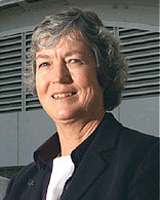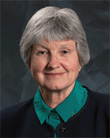This project reports on 'Building capacity in the rural physiotherapy workforce: a paediatric training partnership'; a 6-month clinical and academic training program for two rural physiotherapists in the Goulburn Valley, Victoria, Australia. It followed a successful pilot during which two rural physiotherapists completed a 12-month program.
The health workforce shortage and mal-distribution, including of physiotherapists, in rural and remote Australia and other countries is well documented1-5. The World Health Organization (WHO) recently published its first global policy for improving the retention of health workers in rural and remote places6. The first recommendation is education, aiming:
To design continuing education and professional development programmes that meet the needs of rural health workers and that are accessible from where they live and work, so as to support their retention6
Additionally:
to be successful, continuing education needs to be linked to career paths, as well as with other education interventions6.
The project met WHO recommendations, and also those of the Victorian State Government Strategic Framework for Paediatric Services, which has the aim of offering care that is in the community, close to home where possible, cost effective and sustainable7,8.
Partnerships were established between the University of Melbourne, state and federal government health sectors, the Royal Children's Hospital Melbourne, Goulburn Valley Health, Shepparton, Victorian Early Childhood Intervention Services and SCOPE (a non-government disability services organisation). The first pilot program had demonstrated the effectiveness of the partnerships, with one physiotherapist now leading a rural paediatric rehabilitation service and the other providing a new paediatric physiotherapy clinical service in a rural hospital. An independent evaluation of the pilot program recommended that, because the strategy was effective in recruitment and retention, further funding was crucial to support future programs to incorporate and build on the strengths of the project9.
This paper reports a funding grant from the National Rural Primary Health Projects Initiative of the Australian Government Department of Health and Ageing, which enabled the pilot project to be replicated. This enabled 6 months of full-time employment/training for two rural physiotherapists, based in Shepparton, a town in the Goulburn Valley. The Australian Bureau of Statistics data in 201110 indicates that 20% of the population in the Goulburn Statistical Region was less than 14 years of age (42 560), exceeding the metropolitan average of 18%. However, the Goulburn Valley region was serviced by the equivalent of only one full-time paediatric physiotherapist, which an earlier mapping study demonstrated was grossly inadequate11.
Goulburn Valley Health hosted the trainees full-time. Academic and clinical placements in clinics and community services were coordinated and supervised by a senior paediatric clinical physiotherapist who was also an academic paediatric lecturer at Melbourne University. A reference group, partnership committee and education subcommittee supported the academic/clinician role.
There is a lack of paediatric physiotherapy expertise in rural areas, with little opportunity for clinical training and the only postgraduate education in paediatric physiotherapy practice available within the metropolitan specialist hospital sector. This results in fragmented paediatric physiotherapy services in the community and necessitates rural families to travel to metropolitan services, which is costly and disruptive to family life12. Paediatrics is a specialty area of physiotherapy practice13 and lack of locally available educational pathways contributes to the shortage in rural areas. The workforce issues were highlighted in the paediatric physiotherapy mapping study11, a literature review and feedback from the pilot training program14.
The mapping study documented paediatric physiotherapy services in the Goulburn Valley region across all sectors including early childhood, community, government and non-government children's disability and hospital outpatient services11. It identified major service gaps and waiting lists for parents seeking advice or treatment for their children, for assessment of delayed infant development, and for paediatric orthopaedic physiotherapy and paediatric rehabilitation, including in the disability sector. One paediatrician conceded that they had not referred children requiring physiotherapy to the hospital, because there were insufficient skilled practitioners to provide the service.
Physiotherapy outpatient services for children were only available part-time at Goulburn Valley hospital for half a day per week, at the government early childhood intervention services on 2 days per week, and at a non-government disability service provider on 3 days per week. No paediatric physiotherapy was available at the smaller rural hospitals or in private paediatric physiotherapy practice11.
It has been demonstrated in a recent study that, in paediatric practice, rural physiotherapists who have low self-efficacy demonstrate low levels of confidence in their ability in paediatrics and hold the belief that they lack the skills and attributes to practice. Self-efficacy is defined as a person's judgement of their capabilities to organise and designate courses of action required to attain designated levels of performance15.
Evaluation of this project used purpose-built questionnaires, because, as reported in the Australian Government's Picture of Australia's children 2009 there are no specific indicators to monitor the performance of systems and services available to children and families16.
The project improved accessibility to paediatric physiotherapy services in rural Victoria. This was evident by the increased number of referrals, occasions and nature of service (Table 1) and feedback from stakeholders. It improved family-centred practice through more effective communication with families, and increased services meant less waiting time. Another advantage with the interprofessional partnership model was improved coordination with other service providers.
Paediatric physiotherapy outpatient services had increased by 34% after the 6-month training program (Table 1). The criteria for referral to outpatients was limited to single-issue conditions and therefore mostly new referrals. Complex cases, following assessment, were referred to specialist early intervention of disability services unless there was a specific acute case. An example of an acute case was a child requiring rehabilitation following brain tumour surgery whose father would lose his job if they had to stay in the metropolitan service. Noted is the increase in presentations for adolescents (140%) and for children of primary school age (44%).
The partnerships developed for the pilot program were consolidated and expanded with regular meetings of the reference group, a partnership committee and an education subcommittee. The reference group comprised a senior hospital administrator and the physiotherapy department head, current and previous directors of physiotherapy at the major metropolitan paediatric hospital, managers of Victorian Early Childhood Intervention Services, a non-government disability services organisation (SCOPE), and two parent consumer representatives. The physiotherapy members volunteered their time. The partnership committee managed the program whilst its education subcommittee guided timetabling and content. It was essential that the project manager was both an academic and a paediatric physiotherapy clinician to develop the timetable, academic content and evaluation.
The training was full-time and included supervised clinical practice and theoretical study similar to a registrar program in medical education (Fig1). Supervision was by senior part-time paediatric physiotherapy clinicians, service providers in the community and at the Royal Children's Hospital in Melbourne, Victoria. Trainees managed a caseload, and participated in meetings, tutorials and presentations. The program focused on evidence -based practice, knowledge of typical bio-psychosocial development and family-centred practice. Feedback was provided regarding competency in assessment, clinical reasoning, prioritising strategies, outcome measures and effectiveness of treatment implementation. Communication processes between partner organisations were important with regard to documentation, correspondence, and adherence to appropriate referral and reporting procedures.
The capacity and confidence of the trainees to manage complex sub-acute and ambulatory care cases improved, for example the ability and capacity to respond to requests and subsequent referrals from the tertiary hospital to provide rehabilitation following brain or spinal surgery or to respond to referrals of infants with complex developmental disabilities and co-morbidities. Situations in which two physiotherapists are required, such as for serial casting for foot deformities, were managed locally, further reducing families' financial burdens because travel was no longer required to metropolitan services.
Families, clinical supervisors, managers, paediatricians and academic/professional survey responses were very positive. Survey responses from trainees indicated that the trainees improved their self-efficacy15. Evaluation of the trainees demonstrated that supervision and mentoring developed maturity, confidence and deeper understanding of the importance of family-centred practice.
Since the training program, paediatric physiotherapy services at the regional hospital, Goulburn Valley Health, have increased from one half day to 5 days per week. The Victorian Paediatric Rehabilitation Service recently established a centre there, employing one of the project trainees. The other trainee provides a paediatric physiotherapy service at the rural hospital in Echuca (approximately 50 km north-west of Shepparton) and also at the specialist school. Neither of these services was previously available.
In their responses to an investigator-developed pre- and post-training survey, both trainees expressed satisfaction with their program, intended to remain in rural paediatric practice and appreciated having a career pathway (Appendix A). Questions were scored on a scale of 1-5 (1 = 'not confident'; 5 = 'very confident'). Confidence in treating infants, pre-school and young children improved from 1.5 to 4.5 and for managing adolescents from 2.5 to 4.5.
Trainees appreciated the opportunity to work in a multidisciplinary team and gained better awareness of the resilience of families and when to refer to other health professionals. Some comments were:
I am now much more confident in assessing and treating children, particularly younger children. I gained not only a variety of physiotherapy skills but the opportunity to work in a multidisciplinary team where I could gain a broader perspective of children and their families. I have a better awareness of the role of other allied health in early intervention and am more aware of the key questions to ask/signs to look for which indicate referral to other professionals.
Through greater experience in working with children and their families I have confirmed to myself that paediatrics is an area I enjoy and want to continue working in. Several families have also shown me how resilient to challenges people can be, and how important the family unit is in providing a supportive environment for each other.
Three families who gave informed consent were surveyed. All expressed appreciation of the local service and the training program (Appendix B):
The service has been wonderful and meant I could access services locally. As a new mother not having to travel has helped. [The trainee] has been fantastic. She is very caring to the whole family not just the child.
The physiotherapy has been a blessing; the physiotherapists are always knowledgeable and understanding of our needs as a family and especially to the needs of [child's name].
The paediatric physiotherapy service has saved my family financially, physically and mentally.
Managers of two rural-hospital-based allied health teams were surveyed. They noted that paediatrics is considered a specialist field and that clinician's skills are undervalued (Appendix C):
I have been the physiotherapist who in the past was left to manage the paediatrics clients because most of the other physiotherapists have been reluctant to manage children as it is viewed as a specialist field.
It is so very important in rural practice especially where clinicians are required to work as generalist/specialists. The skills required to do this are undervalued and the stress under which some generalist clinicians' work is unrecognised.
The physiotherapy manager of the Royal Children's Hospital wrote that it assisted management and patient care, with improved accessibility while acknowledging the significant workforce shortage in physiotherapy:
This initiative has assisted (the specialist hospital) manage patients from the region by making services more accessible and available in their own community such as patients requiring rehabilitation, intensive exercise programs or pain management.
We offer our full support to this program and will assist in any way that we can to ensure that it is ongoing as the shortage of physiotherapists, especially paediatric physiotherapists, in rural areas is significant. Specialized training programs such as this, promote an attractive career path and will encourage rural practitioners to remain in rural areas. The lack of such training programs has had a significant impact on workforce limitations in rural areas and may well be one of the reasons that it has been so difficult to maintain services in some country areas.
Another tertiary hospital senior clinician responded that it was difficult finding physiotherapists in the country with the experience and confidence to manage clients, for example in pain management programs. They added that the benefits would extend beyond the expertise to the mentoring of other clinicians and acting as a consultant to determine whether referral to the specialist hospital was indicated.
It is very difficult finding physiotherapists in the country with the confidence and experience to continue management of clients we see.
Several clients seen at Royal Children's Hospital pain management clinic have been referred on to physiotherapists in this training program, I am very pleased to have this resource available.
In the country one has to use what resources one has available. A postgraduate trained physiotherapist would be great to have in a community, but the value would extend beyond that, providing support to other physiotherapists in the region - to assist in assessing, or to get advice on management, rather than have to refer the client on to the city as is generally the case at the moment.
The clinical supervisors were impressed with the trainees' dedication, application and attitude to the training program. They reported on the trainees' competency. The program enabled one supervisor to attend a professional development program because the trainee covered her caseload. The training program was welcomed because it assisted with service provision within an acknowledged workforce shortage. Prospects of workforce sustainability were important to some clinicians as they approach retirement age and have insufficient replacements.
The supervisors reinforced that managing paediatric caseloads is a specialist field where treatment must be timely and, to be effective, often intensive:
[Trainee A] has great passion and intensity for her work in paediatric physiotherapy. She listens carefully to families, plans and develops physiotherapy interventions in response to their needs. [The trainee] has provided ongoing home programs for families independently and within a multidisciplinary team. [The trainee] provided ongoing physiotherapy intervention whilst the specialist children's services physiotherapist was away on study leave for eight weeks, which meant that children's individual therapy goals were not interrupted, especially at significant times e.g. post-surgery. [The trainee] was able to highlight the issues for children who require ongoing physiotherapy services within the community health sector, for those children waiting for allocation or for those who may not be eligible for early childhood services but who present with significant needs.
(Trainee B) has great energy and enthusiasm for the development of rural paediatric services, particularly within the Goulburn Valley. [The trainee] worked well within a multidisciplinary team setting and organized a weekly sensorimotor group, which she conducted with an Occupational Therapist, for children attending preschool, which received excellent parent feedback. Parents enjoyed [the trainee's] friendly manner and the way she challenged and supported the child and family.
Three rural paediatricians were supportive of the training program. One commented that the strength of this model is that the driver was the university, the administrator was the health service and the providers a combination of the university, the hospital and community services. Another stated that there was a massive need for paediatric physiotherapists in rural areas.
The training program built on the Victorian Paediatric Clinical Network guiding principles and policies of the Victorian Government's strategic plan for paediatric services7,8. Its first mission is to advocate for the appropriate development of the paediatrics and child health service system. The principles were to have high quality and safe services built on evidence, knowledge and research; child- and family-centred care; employ a workforce that is skilled and flexible; and provide care that is in the community, close to home where possible, cost-effective and sustainable.
Public support for this project was highlighted with media newspaper articles and photographs17-19.
This project commenced as a hospital-based quality improvement initiative in response to the acute rural paediatric physiotherapy workforce shortage. It was not a research initiative and therefore did not require ethics approval. Future prospective studies are recommended, particularly to determine the impact on improving self-efficacy, which has been found lacking in rural paediatric physiotherapists15.
Recommendations from the 'Building rural capacity' project are to:
- provide structured postgraduate paediatric physiotherapy clinical training in rural health services to enhance family and child access to local, timely, skilled physiotherapy services
- fund postgraduate paediatric rural physiotherapy clinical training to increase clinicians' knowledge, skills and confidence and to provide a career path for rural clinicians
- replicate the 'Building capacity in the rural physiotherapy workforce: a paediatric training partnership' model in other rural geographical areas and in other professions
- develop specific indicators to monitor the performance of systems and services that are available to children and families.
Table 1: GVHealth outpatient paediatric physiotherapy statistics: occasions of contact six months prior and after 6-month training program

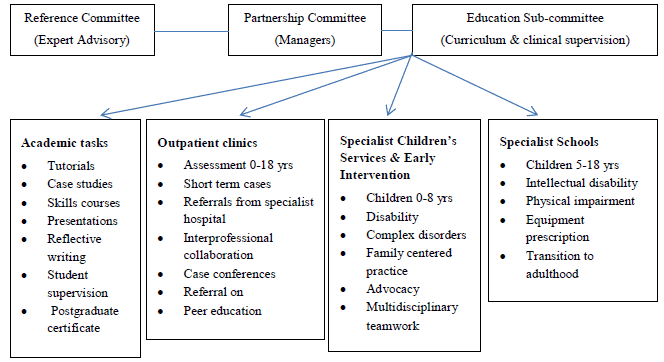
Figure 1: The rural paediatric physiotherapy training model
Funding is acknowledged from Australian Government, National Rural Primary Health Project (NRPHP), the Hugh DT Williamson Foundation, and also support from Ms Anne McCoy AM and the authors' paediatric colleagues.
References
1. Department of Health and Ageing. Report on the Audit of Health Workforce in Rural and Regional Australia, April 2008. Canberra, ACT: Commonwealth of Australia, 2008.
2. Human Capital Alliance. Recruitment and retention of allied health professionals in Victoria - a literature review. Report to the Victorian Government Department of Human Services. Melbourne, VIC: Human Capital Alliance, 2005.
3. Department of Human Services. Physiotherapy labour force, Victoria 2003-2004. Melbourne, VIC: State Government of Victoria, 2006.
4. Humphreys JS, Jones MP, Jones JA, Mara PR. Workforce retention in rural and remote Australia: determining the factors that influence length of practice. The Medical Journal of Australia, 2002; 176: 472-476.
5. Williams E, D'Amore W, McMeeken J. Physiotherapy in rural and regional Australia. Australian Journal of Rural Health 2007; 15: 380-386.
6. World Health Organization (WHO). Increasing access to health workers in remote and rural areas through improved retention. Global policy recommendations. Geneva, Switzerland: WHO, 2010.
7. Victorian Government. Paediatric clinical networks. (Online) (undated). Available: http://www.health.vic.gov.au/clinicalnetworks/paediatric.htm (Accessed 19 December 2012)
8. Victorian Government Department of Health. Paediatric clinical network - summary strategic plan. Melbourne, VIC: DLA Piper, 2012.
9. The Nucleus Group. Malcolm B Menelaus Paediatric Physiotherapy Training Program evaluation. Melbourne, VIC: The Nucleus Group, 2008.
10. Australian Bureau of Statistics. Goulburn Statistical Division. (Online) 2008. Available: http://www.abs.gov.au/ausstats/abs@.nsf/Previousproducts/240Population/People12000-2004?opendocument&tabname=Summary&prodno=240&issue=2000-2004&num=&view (Accessed 14 March 2014).
11. Belcher S. Paediatric physiotherapy mapping study in the Goulburn Valley. Shepparton, VIC: Goulburn Valley Health, Malcolm B Menelaus Paediatric Physiotherapy Training Project, 2008.
12. Latrobe University Health Management Group. Review of Victorian paediatric services. Melbourne, VIC: Latrobe University School of Public Health, 2002.
13. Australian Physiotherapy Association. Australian College of Physiotherapists. (Online). Available: http://www.physiotherapy.asn.au/APAWCM/Careers/Career_Paths/ACP.aspx (Accessed 19 December 2012).
14. Williams E, Morris M. Building capacity in the rural physiotherapy workforce: a paediatric training partnership. Report to the Australian Government, Department of Health and Ageing National Rural Primary Health Project, 2009. Melbourne, VIC: School of Physiotherapy, University of Melbourne.
15. Minisini M, Sheppard L, Jones A. Self-efficacy beliefs and confidence of rural physiotherapists to undertake specialist paediatric caseloads: a paediatric example. Rural and Remote Health 10: 1426. (Online) 2010. Available: http://www.rrh.org.au (Accessed 17 March 2014).
16. Australian Institute of Health and Welfare. A picture of Australia's children. (Online) 2009. Available: http://www.aihw.gov.au/publications/phe/phe-112-10704/phe-112-10704.pdf (Accessed 22 November 2012).
17. Shepparton News. Jensen's ready to race. 8 May 2009; 1.
18. Shepparton News. Physio program to help helpers. 30 January 2008; 5.
19. Shepparton Adviser. Angels at GVHealth. 30 January 2008; 1.
_____________________________
Appendix A: 'Building capacity in the rural physiotherapy workforce: a paediatric training partnership': Pre- and post-training program survey
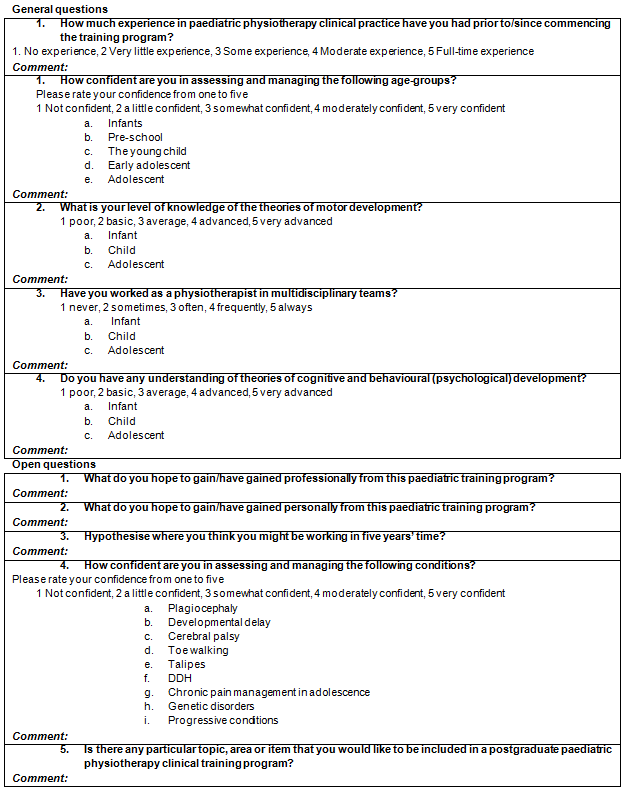
Appendix B: 'Building capacity in the rural physiotherapy workforce: a paediatric training partnership': parent survey
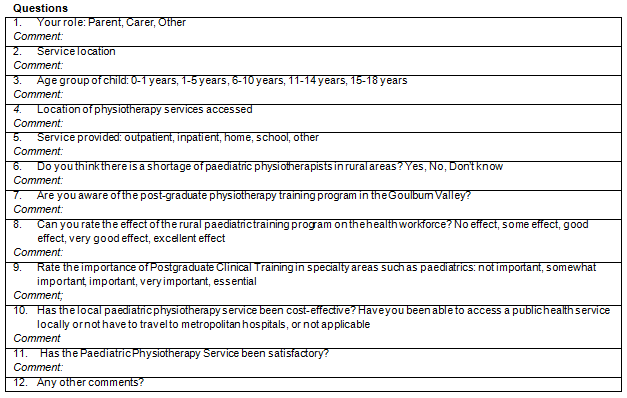
Appendix C: 'Building capacity in the rural physiotherapy workforce: a paediatric training partnership': manager survey

